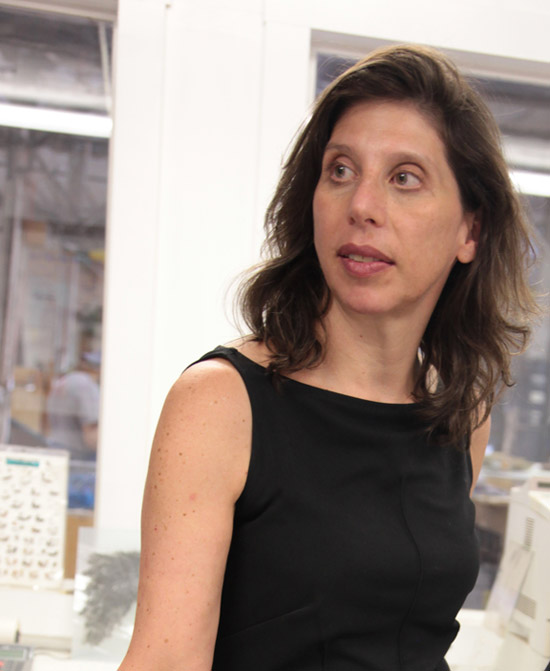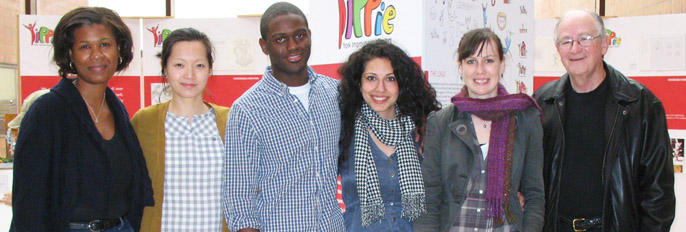Deborah Gans
Professor, Undergraduate Architecture
 When did you come to Pratt, and why?
When did you come to Pratt, and why?
I have been teaching at Pratt in some capacity since 1987 when I taught a seminar on Le Corbusier. Professor John Lobell, who was and is still coordinator of the history sequence in Undergraduate Architecture, invited me. I am still grateful to him.
What course(s) will you offer in fall 2011?
At Pratt, as a full-time faculty member, I have the wonderful opportunity to teach both design and history-theory courses and to collaborate with other disciplines within the architecture school. This fall, I will teach the introductory seminar in the history and theory of modern architecture to graduate students and also an undergraduate architecture studio run in collaboration with a graduate planning studio. It seems possible that the joint architecture-planning studio will be sited in Goa, India, where the Planning department has a grant, and that all the students will travel there for two weeks. So this may be a dream semester.
What academic background do you bring to your teaching?
I have an undergraduate degree in art history from Harvard and fine arts and a graduate degree in architecture from Princeton. I also consider my teaching as a kind of endless continuing education.
Where did you grow up, and when did you know you wanted to be an architect?
I grew up in New Haven, Connecticut, and my father was trained as an architect at Yale, where he studied with Lou Kahn and Eero Saarinen among others. In fact, for family reasons my father went into the family hardware business, so my life is really the culmination of two generations of aspiration.
How do you combine so many other roles—author, contributing editor at BOMB magazine, and principal architect of Gans Studio—with teaching at Pratt?
I don’t do them all at once! But honestly, they feed each other. I certainly run my office as a kind of academic studio. And writing on a subject always makes you see it more clearly, which informs the other work. Teaching makes you articulate your thoughts, which helps the writing. You get the picture.
Tell us how you conceived of your workbox school desk for the New York City School system, which is now in the permanent collection of the Museum of the City of New York.
My partner at the time, Matthew Jelacic (B. Arch. ’91) and I entered two competitions with the School Construction Authority (SCA) for a school of the future. We placed in both competitions, so the SCA then asked us to propose a project smaller than a school. We proposed a “desk of the future,” which was originally technologically conceived to integrate computers, but became more a social instrument inspired by the conditions we observed in the public schools. Basically, there was overcrowding with classes held in cafeterias and even closets for children who often lived in similarly overcrowded and unstable conditions. So we were inspired to make the desk into a personal, movable “home” for each child—a kind of junior office cubicle.
What inspired your landscape of refugee camps, which was featured in the U.S. pavilion at the 2008 Venice Biennale?
I entered a competition in 1999, again with Matthew Jelacic, this one for Kosovo refugees sponsored by Architecture for Humanity. For that competition we designed two columns that also contained water and power infrastructures to replace the de rigeur tent. I then became fascinated with the camps, which are virtual cities without citizens and often last for generations. Over the past decade I have developed that initial project further with two industrial engineers from Rutgers—Professors Elsayed and Basili using their patented high strength papers—but have also come to consider the planning and landscape of camps as more important than the single dwelling.
Why does your collaborative design (with artist Kiki Smith) for the new East Window of the Eldridge Street Synagogue in Manhattan feature both five- and six-pointed stars?
The central star is the six-pointed Star of David—not only for obvious liturgical reasons but also because the window is mimetic of the domes in the synagogue, which also have fields of five-pointed stars and a Star of David at the center. I think of the window as such a dome rotated 90 degrees. In fact, I designed the central star with depth—it is about eight inches deep—so that it functions like the oculus of a dome letting in the light from its sides, which are clear. As for the enigma of the five-pointed stars in a Jewish house of worship: Its answer lies in the field of the American flag most likely. The synagogue was the first great structure for the Jews of New York who were as proud to be American as to be Jewish.
How do you see the architect’s work as a vehicle for effecting social change?
The post-modern era really took a step back from the position that architecture can change the world, in part because of the failures of the modern movement in trying to do so. It is true that I have spent a lot of time trying to reformulate how architects can participate in the social realm. First of all, I think the word participation is key because it acknowledges that the relation of form to culture is complex with many factors beyond the architect’s control. Also, and most importantly, I think it has to do with the situations we engage and how we frame them—as architects. I have gravitated toward extreme situations like refugee camps and post-Katrina New Orleans not only because they need help, but also because they present emerging pervasive social and cultural conditions that will effect our “normative” built environment in the future.
What is the main quality you look for in students that you consider vital to their future career success?
Their obsessive interest in their own work. Architecture demands that kind of drive—over a long period.
What do you do for recreation outside of work?
Well, life and work are kind of the same thing. But I love anything that involves moving rather than sitting at my desk—swimming, a dance class, walking around the city—any city.
What would we be surprised to learn about you?
The dance class part. When I first came to New York it was to try to be a dancer. No regrets.
Photo: Kate Milford

 Gateway Editors
Gateway Editors
